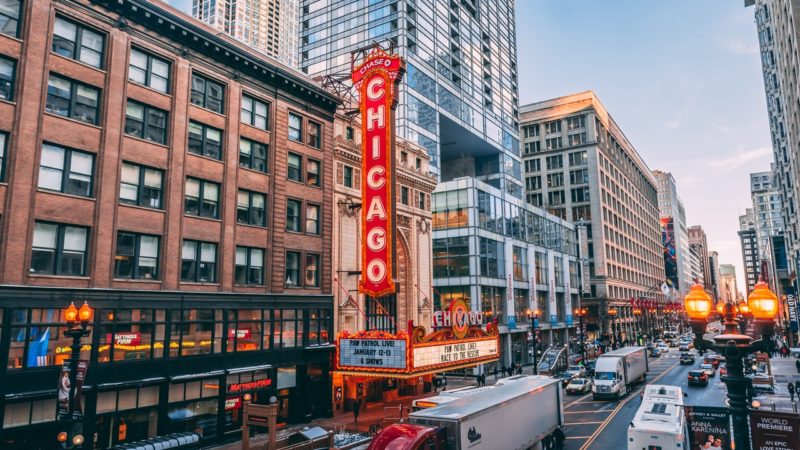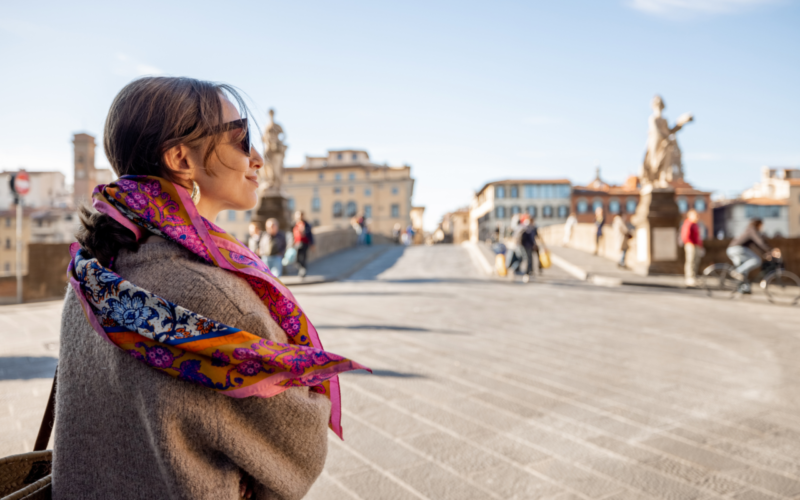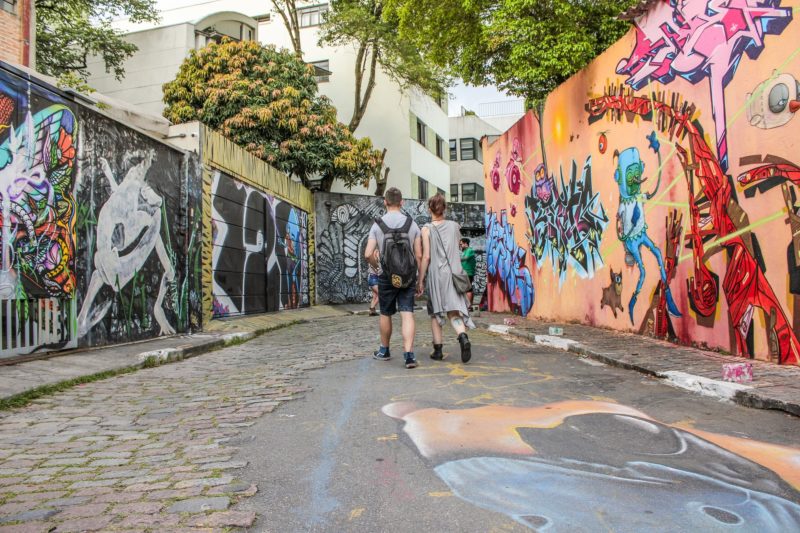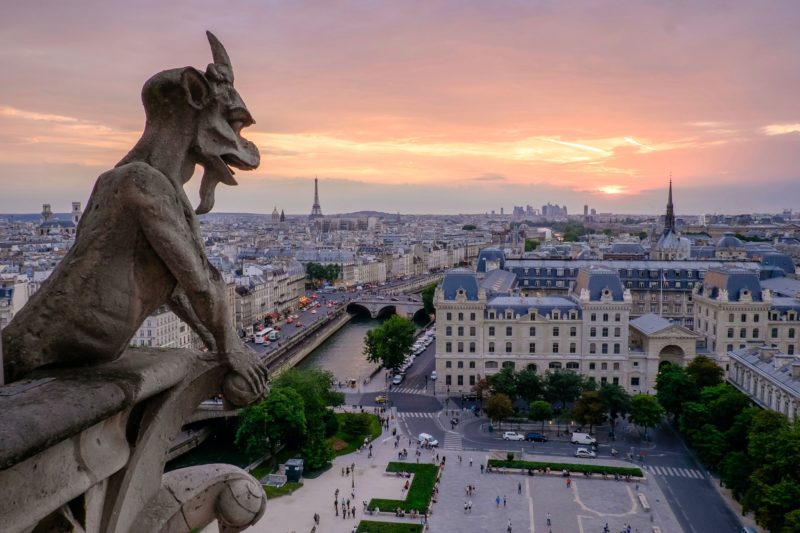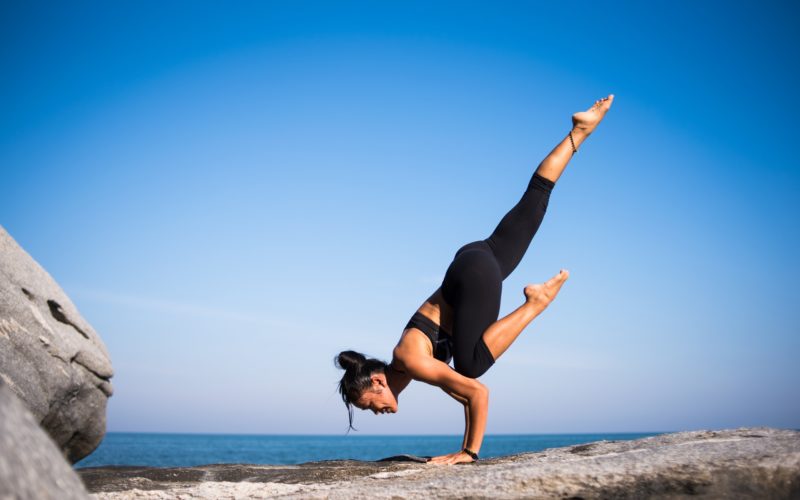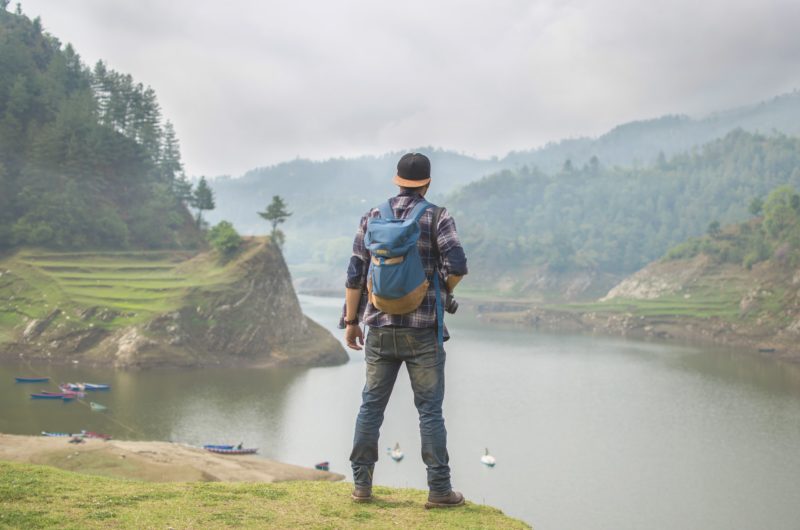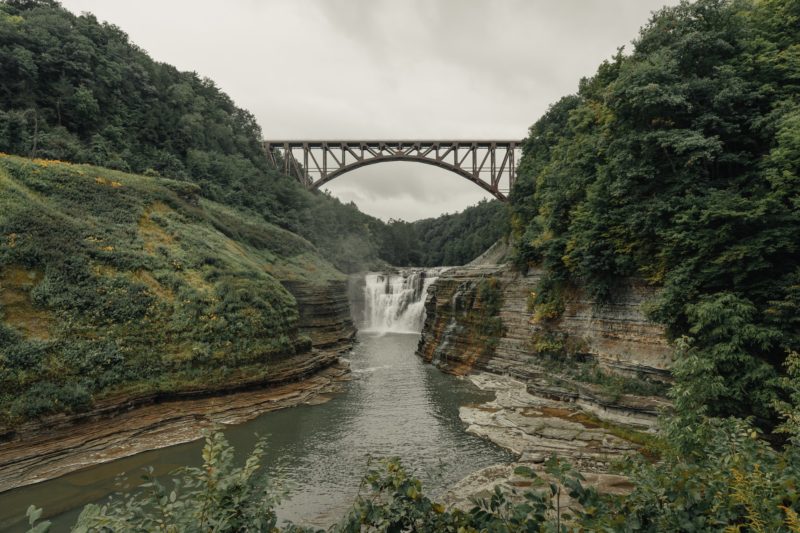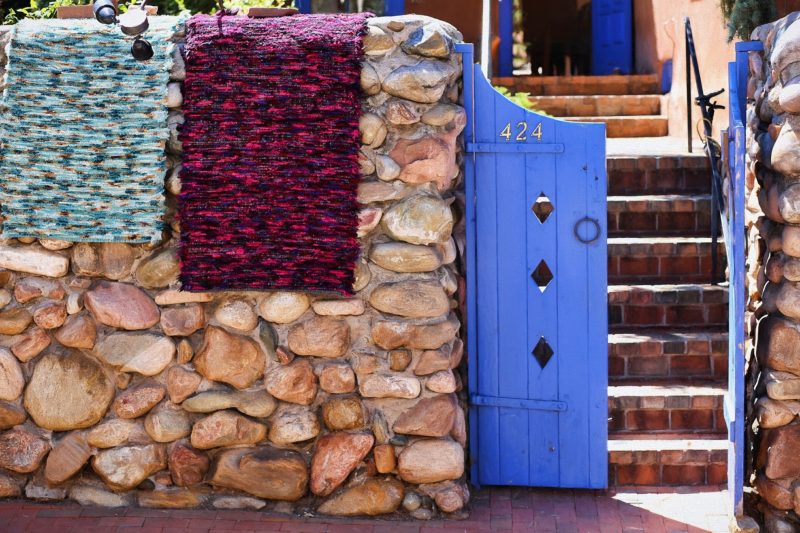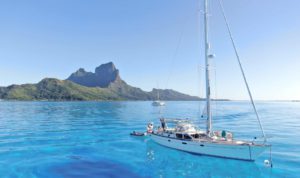A quick Google search on Vietnam will pull up numerous articles on things to do in South and North Vietnam. While Vietnam is a vast and diverse country worth exploring, Central Vietnam should be at the top of your list. The best city to visit? Da Nang, located right on the gorgeous coast, in the middle of Central Vietnam. Da Nang is a truly unique city, with some of the best beaches and nature in Vietnam. As a sustainable tourist you should absolutely consider booking a flight to explore Da Nang City, home to Vietnam’s lesser known tourist attractions.
I first visited Da Nang, Vietnam in 2019. I had done no research prior to arriving and was surprised to find beaches and a boardwalk similar to Miami, fresh air, blue skies and massive seafood restaurants. I had been living in Hanoi and Da Nang was an entirely different world from the smoggy, chaotic and jam packed city. I had no idea at the time that I would return in early 2020 and end up spending almost 7 months, during a pandemic, in Da Nang. Thankfully, Vietnam was particularly good at controlling outbreaks of COVID-19, and felt like a safe haven. After spending half a year in Da Nang by accident, I fell in love with it.
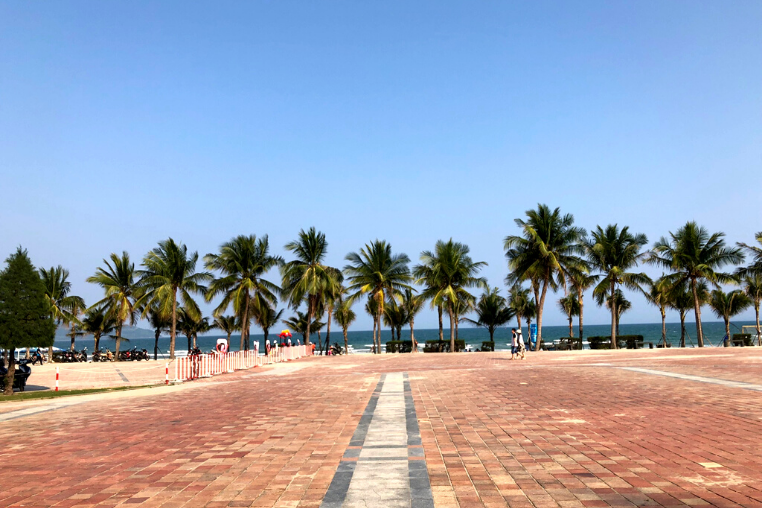
What Makes Da Nang So Special? The Beaches, the Food, and the People
Da Nang is filled with white sand beaches and a massive, palm tree lined boardwalk. The overall vibe in Da Nang is laid back, peaceful and beautiful, which is not a typical description of the cities in Vietnam. There’s a reason that so many Vietnamese people across the country vacation in Da Nang which ranks high on the list of best places to visit in Vietnam. Da Nang is split into two parts: the river side and the beach side.
On the beach side, you have high rise hotels, runners on the boardwalk, and low-key restaurants offering beach side seafood and cocktails. On the river side you’ll find the bustling city center with food stalls, traffic, trendy cafes and colonial architecture. In just five minutes, everything can change drastically. This is one of my favorite things about the city – it’s impossible to get bored when every block offers brand new things to see in Da Nang.
What I love most about the Vietnamese culture is how proud people are of their home and their way of life. Everyone is so eager to show you how things are done, where to shop, and what they do. Most importantly, everyone is eager to feed you. If you’re not eating for the majority of time you’re in Vietnam, you’re not doing it right. I have never had more dinners or been invited into more homes by locals than when I was in Vietnam. Despite not being able to communicate, we could connect over a smile and a plate (or ten) of home cooked food with a cold beer.
Each region has very different food, and Central Vietnam brings new flavors and fusions to satisfy everyone. Since Da Nang is a coastal city, seafood is a huge part of the local diet. You’ll see the fishermen going out on little round boats at sunrise every day, and you’ll find numerous restaurants dedicated entirely to seafood.
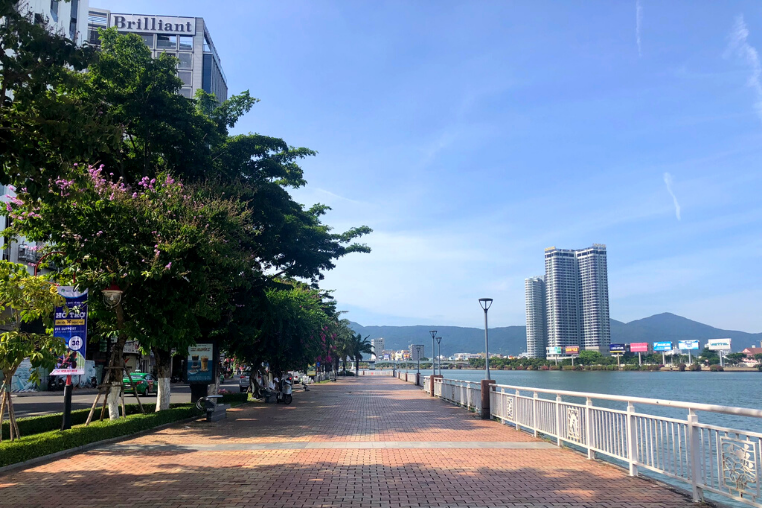
Understanding the Strength of the Vietnamese Culture
As an American, I was nervous about visiting Vietnam. We are often only taught about the Vietnam war. We’re not taught about the Vietnamese culture or encouraged to visit. After calling Da Nang my home, exploring both North, South and Central Vietnam extensively, I saw first hand how beautiful, welcoming, and diverse Vietnam is. My time in this country made me realize how much of what we had been taught in the U.S. about Vietnam, was just not true.
I’ll never forget my first experience at the war museum or hearing locals share their perspective of the Vietnam War. While it’s important to understand that the country is still divided and to respect that while traveling, especially as an American, I was continuously struck by the overall sense of community in Vietnam.
During the early days of the pandemic, the strength of the Vietnamese community was evident. The Vietnamese government took swift and serious action, but the people’s cooperation and respect for their neighbors was what really stood out. It’s what allowed Vietnam to be so successful in stopping the spread. The result? A country that was able to completely resume operation after the first lockdown. Everyone was incredibly proud of each other for cooperating and beating the virus. It’s this pride and love for Vietnam that makes traveling there so memorable.
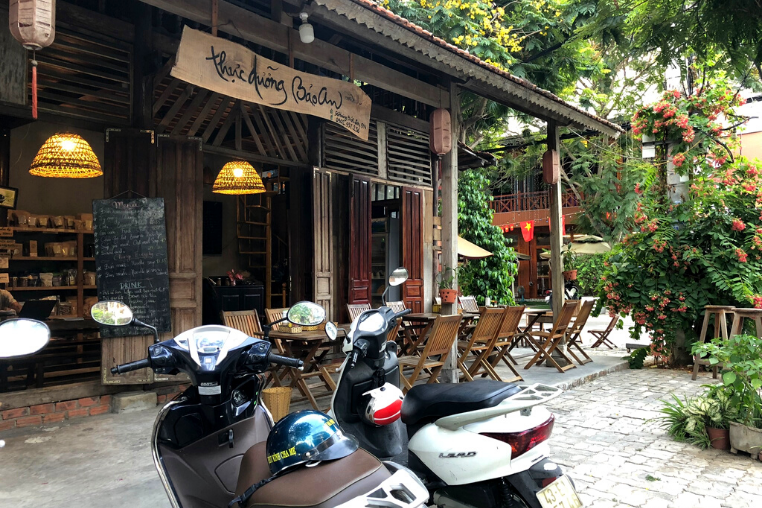
Things to Know About Central Vietnam As a Responsible Tourist:
- Everyone drives a scooter, so you won’t see many cars or pedestrians. If you’re a pedestrian- stay alert! You won’t have the right away.
- If you’re going to rent a scooter, make sure you are incredibly experienced. While Da Nang isn’t as busy as Hanoi or Ho Chi Minh, it’s still unlike anything you’ve probably driven in before.
- The Vietnamese people aren’t fans of the sun and those living on Central Vietnam’s gorgeous coastline are no exception. We were surprised to discover during a sunrise paddle boarding session that the normally empty beaches were absolutely packed with old ladies doing aerobics, surfers, runners and fishermen. By the time the sun rose, everyone was gone. Overall, the beaches in Da Nang will be relatively empty except from sunset to sunrise.
- Sugar and syrup is basically a staple food in Vietnam. If you’re sensitive to sweetness, be sure to say no sugar when ordering any beverage.
- It’s always a good idea to have cash on you. There are numerous places that take credit cards in Da Nang, but even more that do not.
- Pickpocketing is common and it will usually be someone on a scooter. Take extra care to not stand on the side of the street with your phone or purse out.
- Da Nang is very English friendly. Most waiters speak English and English menus are common. Do not expect locals outside of the hospitality industry to speak English, however.
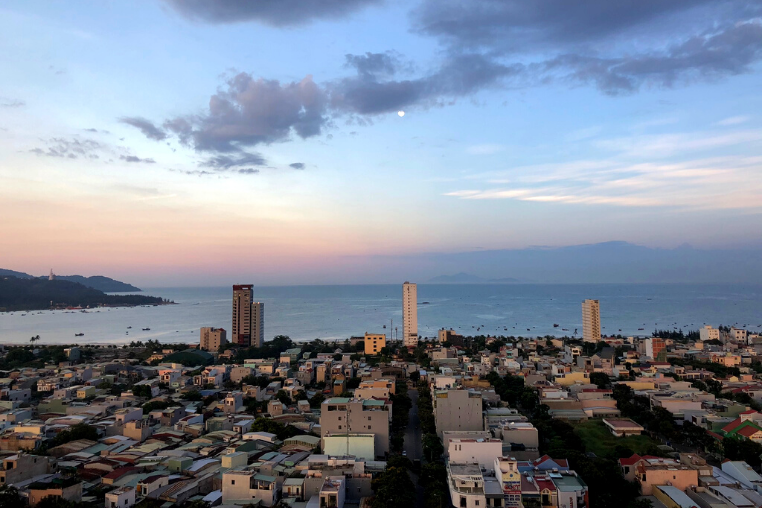
18 Sustainable Things to Do in Da Nang:
- Check out the awesome zero-waste grocery stores throughout the city like No Waste to Go.
- Support the local vegan or vegetarian restaurants! My favorites are ROM and ANs.
- Scooter through the breathtaking Son Tra peninsula. Stop at Linh Ung Pagoda and Ban Co Peak for unbeatable views.
- Have a beach day and eat at one of the many local seafood spots.
- Use a Grab bike to get around. It’s a local and greener transportation option.
- Shop at the local markets and health food stores. I love Moon Milk and Con Market.
- Get something custom made from a local tailor. Vietnamese tailors are incredibly skilled and people travel to Central Vietnam for custom made clothes. You can find wonderful tailors throughout Da Nang and Hoi An. Simply bring a photo of something you want designed and you’ll have a custom piece within a day or two.
- Eat at the local night markets. This is the best way to try traditional Central Vietnamese dishes.
- Enjoy natural and locally owned spas. You can’t leave Da Nang without getting a massage, a facial or your nails done. My favorite spot is Herbal spa.
- Take surfing or paddle boarding lessons. Once you’ve learned some skills, you can join the locals who paddle board at sunrise in Son Tra.
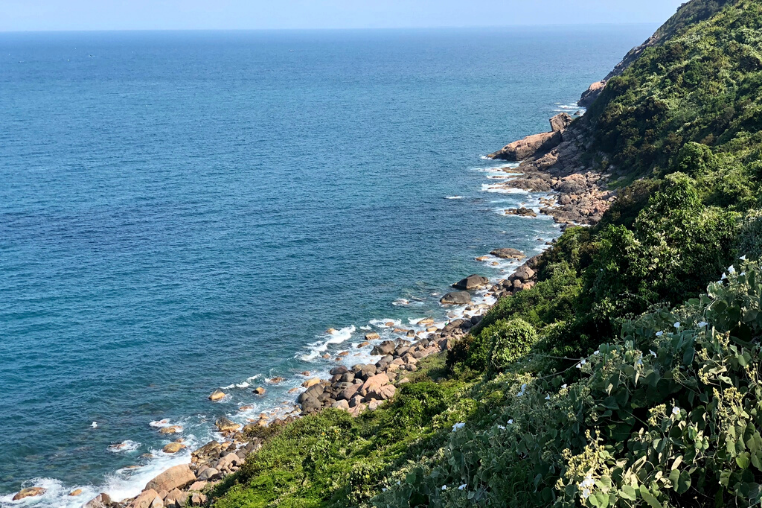
- You haven’t had coffee until you’ve been to Vietnam! Try out traditional drinks like coconut ca phe (coffee blended with coconut ice cream) and ca phe sua da (Coffee with condensed milk) at local roasteries.
- Venture outside of touristy My Khe beach. For the best beaches in Da Nang, I recommend Non Nuoc, and checking out the secret beaches throughout Son Tra.
- Organize a local tour to take you to Cham Islands and camp overnight.
- Scooter through the famous Hai Van Pass to hike through Bach Ma National Park. If you’re not comfortable scootering on your own, you can hire a local guide to take you.
- Learn about Central Vietnam’s history and the Vietnam War by visiting the Cham museum and Fifth Military Division Museum.
- Do as the locals do and have a nighttime picnic on the beach. You’ll find people grilling and enjoying karaoke.
- Every Sunday, Da Nang puts on a fire show at the Dragon Bridge. Stroll along the waterfront and enjoy street food while you watch.
Eco-Friendly Accommodation Options in Da Nang
Choosing locally-owned, environmentally-conscious accommodations allows you to enjoy Da Nang’s enchanting beauty while playing your part in preserving it.
The Memory, located in the heart of Da Nang, is a splendid testament to a hostel that pays homage to the craftsmanship of Vietnamese artisans. Supporting local communities, The Memory sources from villages like Hot Hai, known for its grindstones; Kim Bong, the woodcraft hub; Non Nuoc, the marble village; and Thanh Ha, famous for its pottery. The hostel’s open green spaces invite the refreshing sea breeze, providing natural ventilation. The coolness is enhanced by the tiled and stone walls, minimizing the need for air conditioning. This design is in perfect harmony with nature, embracing a sustainable approach to comfort.
Another gem is the Eco Green Boutique Hotel, which lives up to its name with eco-friendly initiatives like energy-saving appliances, solar-powered heating, and organic toiletries. This charming hotel prioritizes local community involvement, offering guests an authentic taste of Da Nang’s culture.
Day Trips from Da Nang
UNESCO World Heritage Sites
Hoi An

A short drive away from Da Nang, Hoi An is a spellbinding blend of old-world charm and modern sophistication. Once a bustling port town, Hoi An is now known for its remarkably preserved Ancient Town, filled with stunning traditional architecture, colorful lanterns, and an array of artisanal shops. Meandering through the narrow lanes, you’ll be transported back in time, making it a truly unique cultural immersion.
My Son
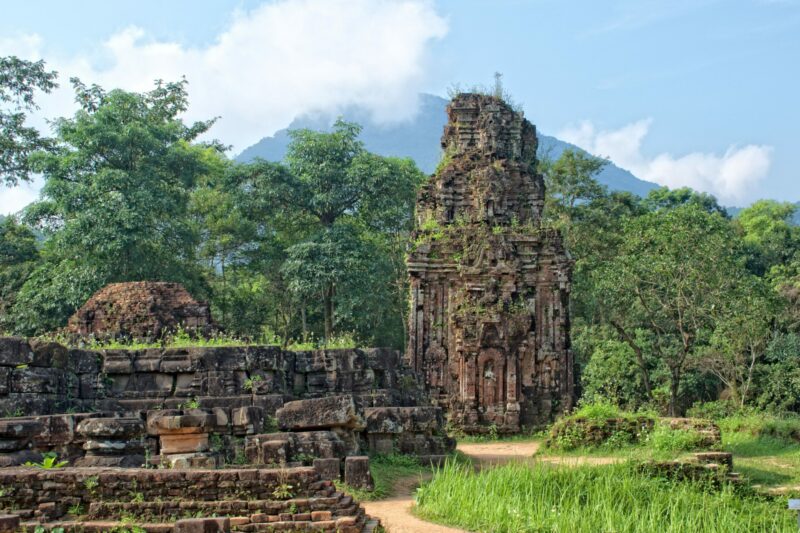
If you are a history enthusiast or simply a lover of grand architecture, a trip to My Son should top your list. This archaeological site is home to the remnants of the ancient Champa civilization that thrived here between the 4th and 13th centuries. Amidst the lush green valleys, you’ll find red brick temples and towers, standing as silent testaments to the Champa’s architectural prowess and spiritual devotion.
Imperial City of Hue

Further afield, yet easily reachable for a day trip, is the Imperial City of Hue. As the former capital of Vietnam’s last dynasty, Hue offers a rich tapestry of history. The majestic Perfume River bisects the city with the ancient citadel, royal tombs, and ornate pagodas on one side, and the modern city on the other. A boat tour on the river is a must-do here, especially at sunset when the city’s historic skyline is bathed in a golden hue.
Phong Nha-Ke Bang National Park

For nature lovers and adventurers, a slightly longer journey will lead you to the Phong Nha-Ke Bang National Park, the kingdom of spectacular caves, including the world’s largest cave, Son Doong. This UNESCO World Heritage Site is adorned with sublime karst mountains, deep jungles, and underground rivers. A guided tour through the caves is truly an awe-inspiring experience that will remain etched in your memory long after your visit.
Frequently Asked Questions (FAQs)
What is the Best Way to Get Around Da Nang?
Navigating Da Nang is an adventure in itself. Taxis and Grab (Southeast Asia’s version of Uber) are readily available and generally affordable. For a more local experience, cyclos – three-wheeled bicycle taxis – offer a leisurely pace to take in the city’s sights. Alternatively, renting a motorbike is a popular choice among tourists for the flexibility and freedom it offers. Just ensure you’re familiar with Vietnam’s traffic rules and always wear a helmet for safety. For longer distances, Da Nang’s train station and international airport provide connections to major cities in Vietnam and beyond.
Is Da Nang a Safe City to Visit?
Da Nang is considered one of the safer cities in Vietnam for tourists. The locals are typically friendly and helpful, and serious crimes against tourists are relatively rare. However, like any city worldwide, petty crimes such as pickpocketing can occur, especially in crowded areas. It’s recommended to exercise normal precautions, stay vigilant, and secure your belongings.
What currency is used in Da Nang?
The official currency of Vietnam is the Vietnamese Dong (VND). Credit cards are widely accepted in hotels, upscale restaurants, and shops, but smaller establishments and local markets may only accept cash. ATMs are readily available throughout the city if you need to withdraw cash.
When is the Best Time to Visit Da Nang?
Da Nang is truly a year-round destination, but to enjoy its sunny beaches and outdoor adventures to the fullest, the period from February to May is considered optimal. During these months, the city experiences moderate temperatures and low humidity, providing comfortable conditions for exploration. The rainfall is minimal, ensuring your plans won’t be waterlogged. However, if you don’t mind the occasional drizzle, the months leading up to February can also offer a pleasant visit, with fewer tourists and a peaceful atmosphere.





